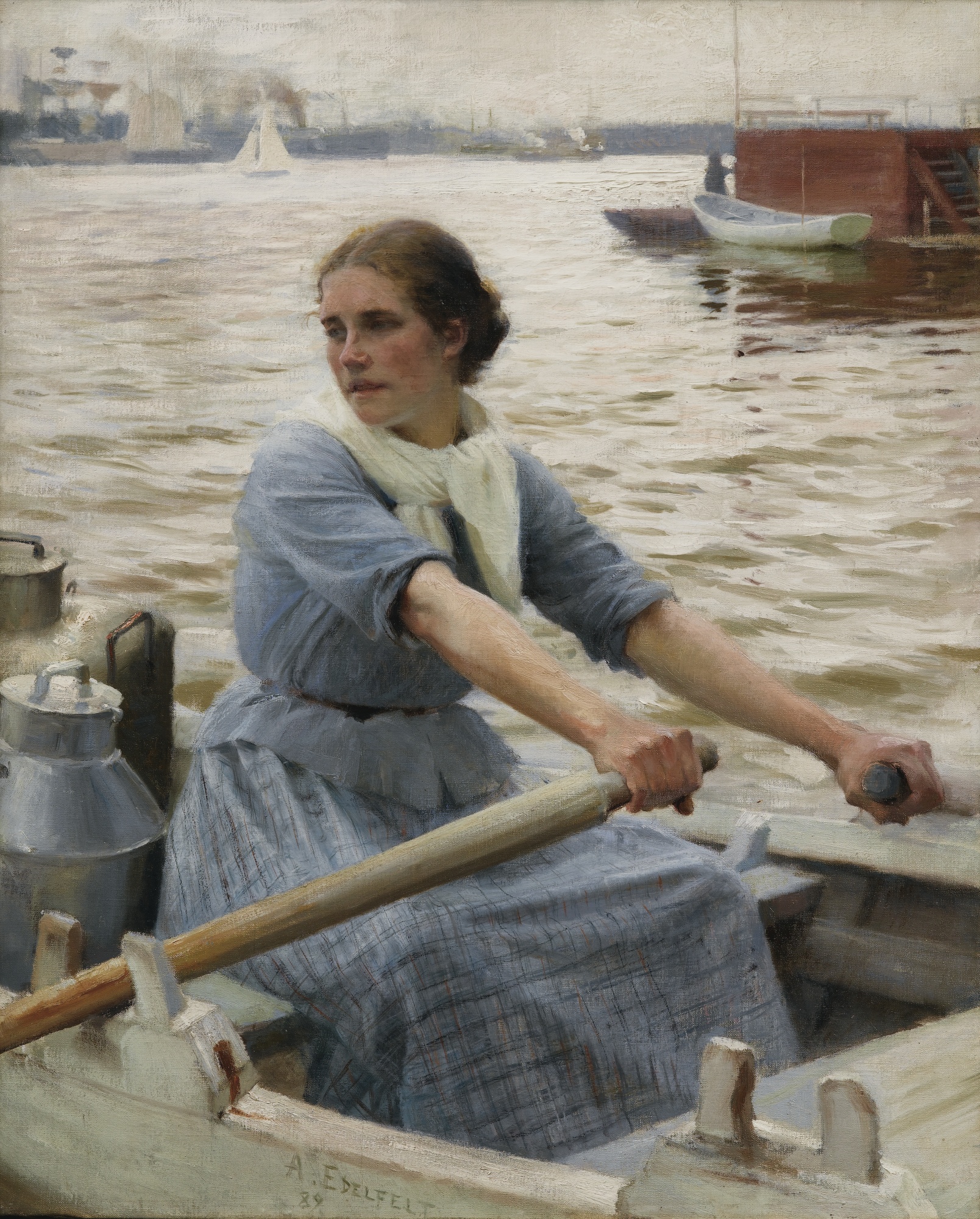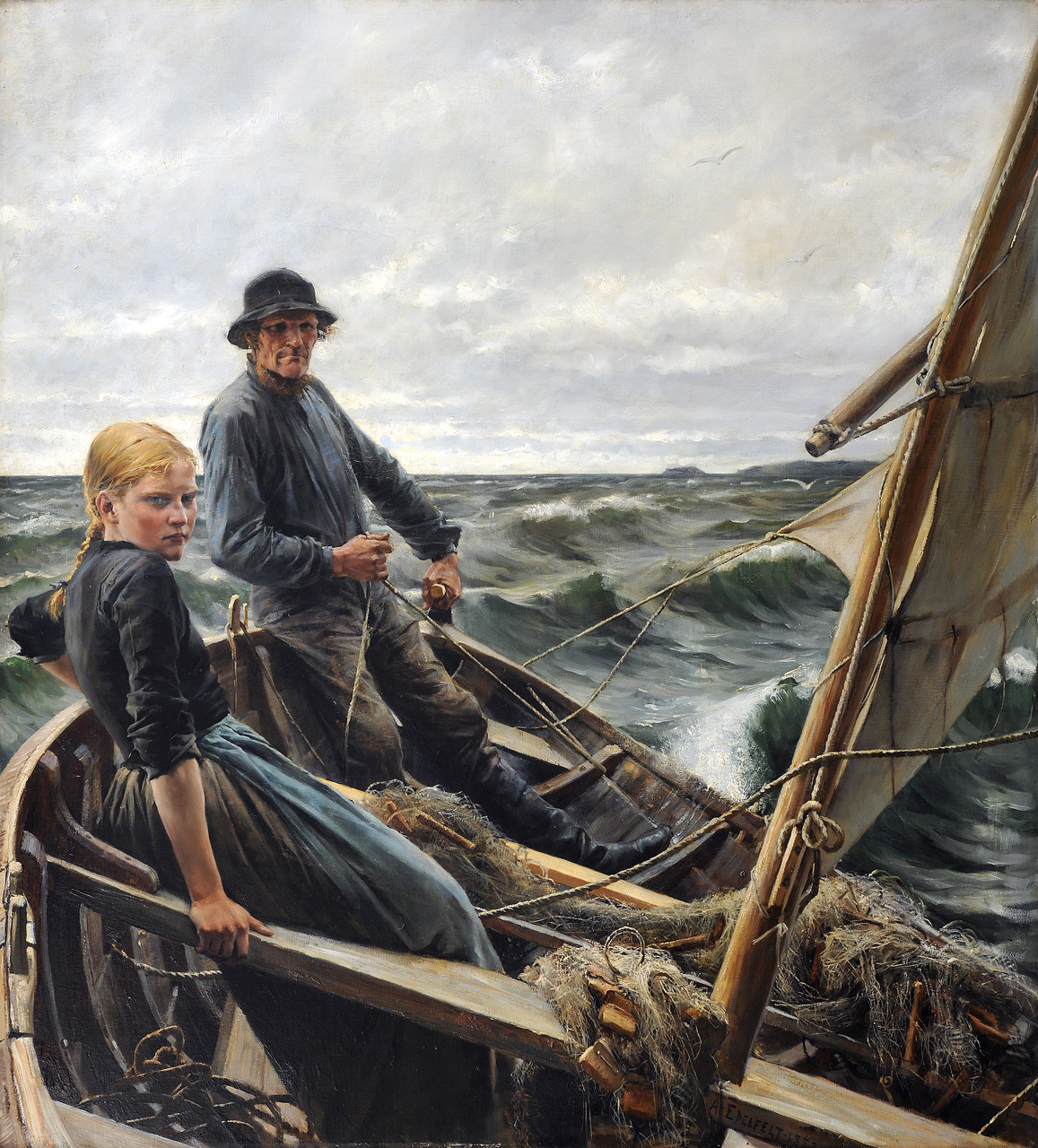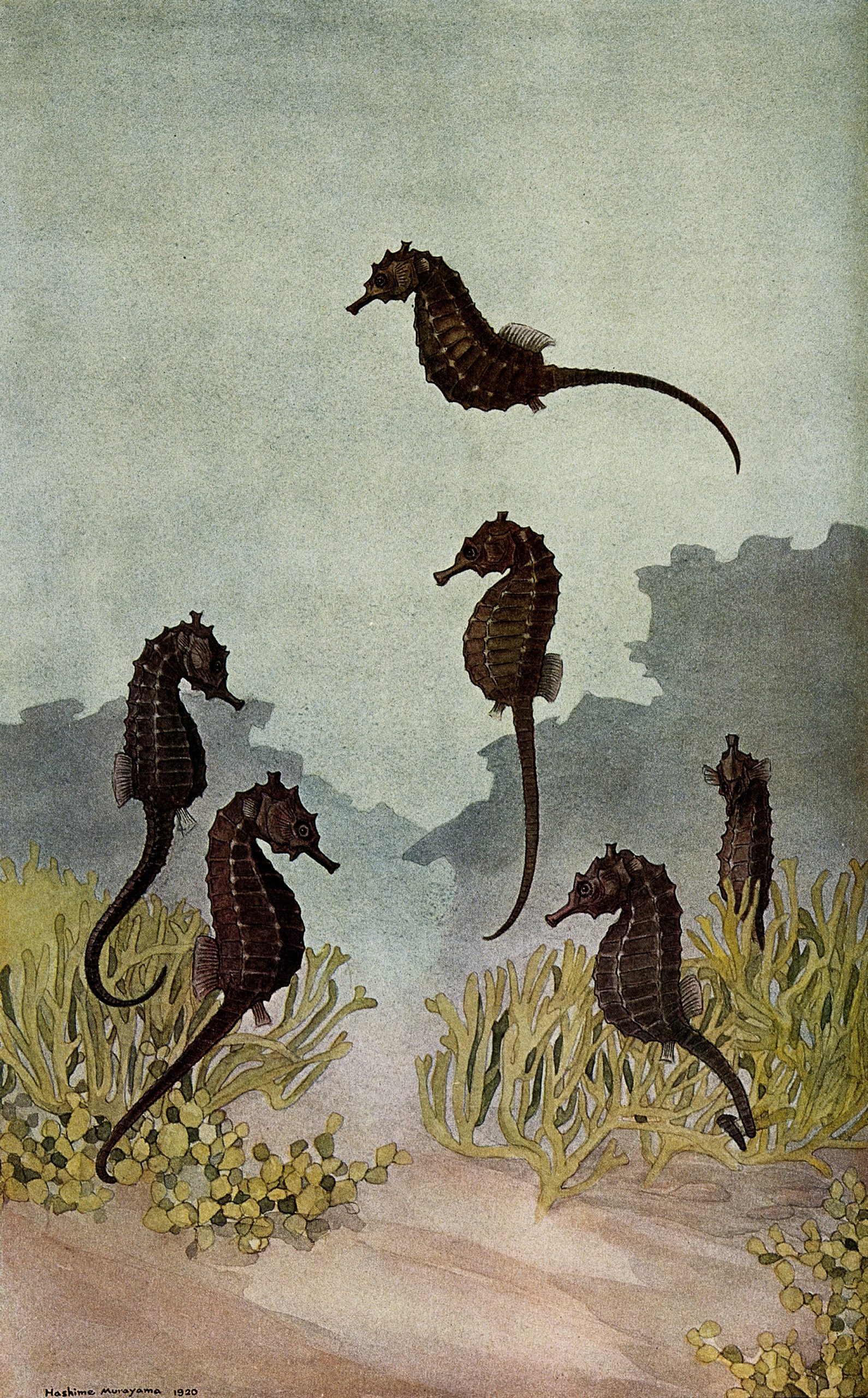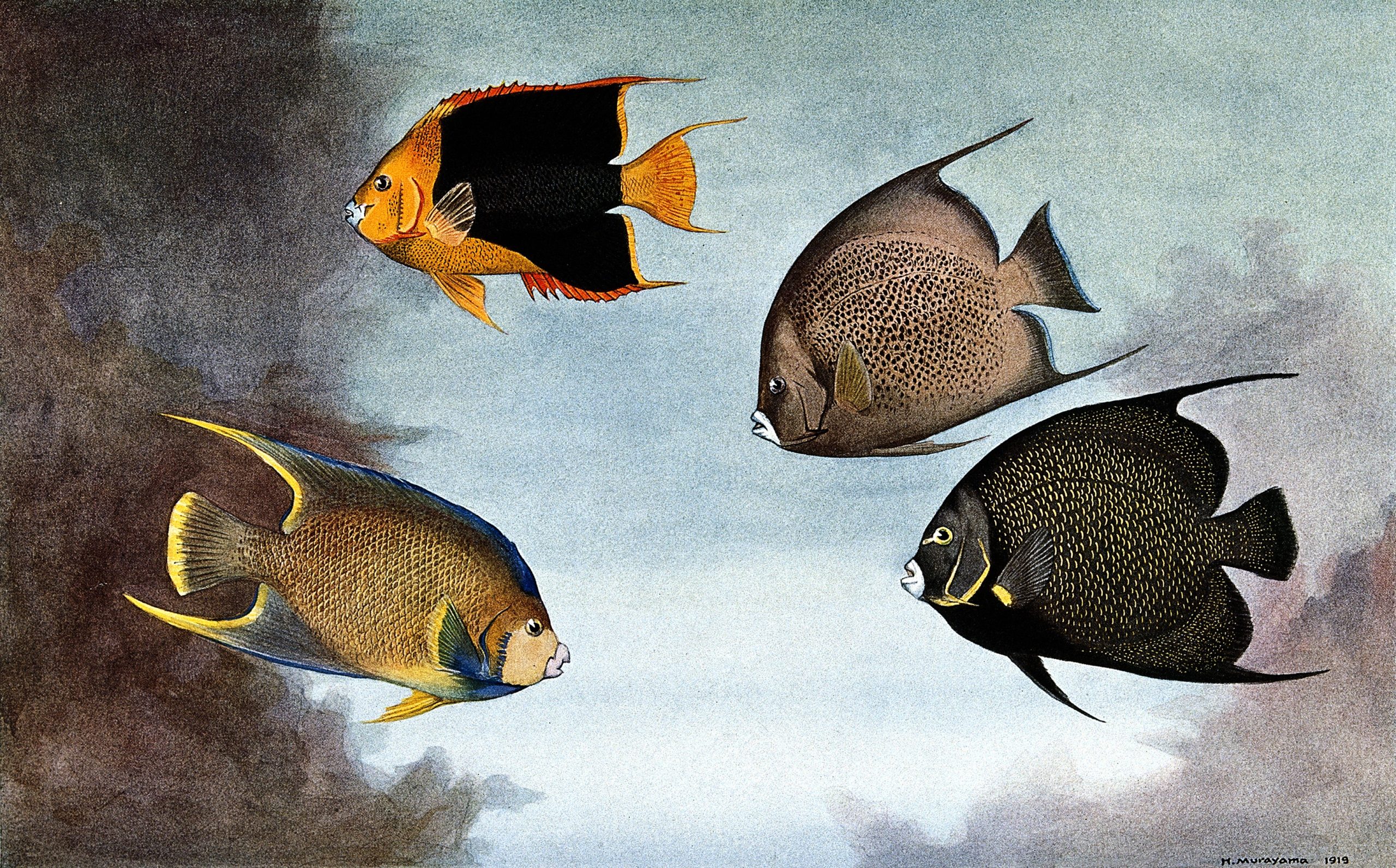36 The Power and Mystery of the Sea
“The Open Sea” by Dorothea MacKellar
From my window I can see,
Where the sandhills dip,
One far glimpse of open sea.
Just a slender slip
Curving like a crescent moon—
Yet a greater prize
Than the harbour garden-fair
Spread beneath my eyes.
Just below me swings the bay,
Sings a sunny tune,
But my heart is far away
Out beyond the dune;
Clearer far the sea-gulls’ cry
And the breakers’ roar,
Than the little waves beneath
Lapping on the shore.
For that strip of sapphire sea
Set against the sky
Far horizons means to me—
And the ships go by
Framed between the empty sky
And the yellow sands,
While my freed thoughts follow them
Out to other lands.
All its changes who can tell?
I have seen it shine
Like a jewel polished well,
Hard and clear and fine;
Then soft lilac—and again
On another day
Glimpsed it through a veil of rain,
Shifting, drifting grey.
When the livid waters flee,
Flinching from the storm,
From my window I can see,
Standing safe and warm,
How the white foam tosses high
On the naked shore,
And the breakers’ thunder grows
To a battle-roar…
Far and far I look—Ten miles?
No, for yesterday
Sure I saw the Blessed Isles
Twenty worlds away.
My blue moon of open sea,
Is it little worth?
At the least it gives to me
Keys of all the earth
You can find more information about the Australian poet Dorothea Mackellar here.
The Promise of the Sea
Excerpt from The Sea Around Us by Rachel Carson (Oxford, 1951)
“There is the promise of a new spring in the very iciness of the winter sea, in the chilling of the water, which must, before many weeks, become so heavy that it will plunge downward, precipitating the overturn that is the first drama of spring. There is the promise of new life in the small plantlike things that cling to the rocks of the underlying bottom, the almost formless polyps from which, in spring, a new generation of jellyfish will bud off and rise into the surface waters. There is an unconscious purpose in the sluggish forms of the copepods hibernating on the bottom, safe from the surface storms, life sustained in their tiny bodies by the extra store of fat with which they went into this winter sleep” (p. 36).

Excerpt from The Art of Seeing Things: Essays by John Burroughs by John Burroughs, edited by Charlotte Zoe Walker (Syracuse University Press, 1921)
“So far as seeing things is an art, it is the art of keeping your eyes and ears open. The art of nature is all in the direction of concealment. The birds, the animals, all the wild creatures, for the most part try to elude your observation. The art of the bird is to hide her nest; the art of the game you are in quest of is to make itself invisible. The flower seeks to attract the bee and the moth by its color and perfume, because they are of service to it; but I presume it would hide from the excursionists and the picnickers if it could, because they extirpate it.
For more writings by John Burroughs please see the links below:
Birds and Bees, Sharp Eyes, and Other Papers
A Compilation of Essays About Nature

Excerpt from “The Sea” by Pablo Neruda
For the Chilean poet Pablo Neruda, the power of the sea can be a catalyst to learning about existence and the meaning of life. In this stanza, Neruda highlights some of the life lessons that can be learned from the sea:
I need the sea because it teaches me.
I don’t know if I learn music or awareness,
if it’s a single wave or its vast existence,
or only its harsh voice or its shining
suggestion of fishes and ships.
The fact is that until I fall asleep,
in some magnetic way I move in
the university of the waves….
You can access the complete poem and lessons about the poem here.
“Sea Shell” by Amy Lowell
Sea Shell, Sea Shell,
Sing me a song, O’Please!
A song of ships and pirate men,
And parrots and tropical trees.
Of islands lost in the Spanish Main
Which no man ever may find again,
Of fishes and corals under the waves,
And sea-horses stabled in great green caves.
Sea Shell, Sea Shell,
Sing of the things you know so well.

A Note About the Artist Frederick S. Church (Art of the Print)
“Frederick S. Church (Grand Rapids, Michigan, 1842 – New York, 1924) was a major nineteenth century painter and etcher of figurative and fantasy scenes, Frederick Stuart Church first served as a soldier in the Civil War. He fought in many campaigns and served under General Sherman in his march to the sea. After the conclusion of the war, F. S. Church studied art at the Chicago Academy of Design, the National Academy of Design and at the Art Students League, New York. Frederick Church began his career as an illustrator for Harper’s and received his first commissions for painting in 1875. After that point he dedicated himself to both painting and etching. In the latter category he enjoyed much success and some of his etchings were commissioned by the influential Paris publisher, L’Art.
In many respects Frederick Stuart Church’s art of the 1880’s serves as a precursor to the Art Nouveau movement of the 1890’s. His fantasy scenes (particularly those dealing with women) exhibit the graceful imagery and long, flowing lines that were to become dominant elements of Art Nouveau.
F. S. Church was a full member of the American Water Color Society, the New York Etching Club, and the Society of Illustrators. He was elected a full Academician of the National Academy in 1885. Examples of Church’s fine art are found in many important collections, such as the Metropolitan Museum of Art, New York, and the National Gallery of Art, Washington.”


“The Sea Gull” by John Gardiner Calkins Brainard
“Ibis et redibis nunquam peribis in bello.” — Oracle.
I seek not the grove where the wood-robins whistle,
Where the light sparrows sport, and the linnets pair;
I seek not the bower where the ring-doves nestle,
For none but the maid and her lover are there.
On the clefts of the wave-washed rock I sit,
When the ocean is roaring and raving nigh;
On the howling tempest I scream and flit,
With the storm in my wing, and the gale in my eye.
And when the bold sailor climbs the mast,
And sets his canvass gallantly,
Laughing at all his perils past,
And seeking more on the mighty sea;
I’ll flit to his vessel, and perch on the truck,
Or sing in the hardy pilot’s ear;
That her deck shall be like my wave-washed rock,
And her top like my nest when the storm is near.
Her cordage, the branches that I will grace—
Her rigging, the grove where I will whistle;
Her wind-swung hammock, my pairing place,
Where I by the seaboy’s side will nestle.
And when the fight, like the storm, comes on,
‘Mid the warrior’s shout and the battle’s noise,
I’ll cheer him by the deadly gun,
‘Till he loves the music of its voice.
And if death’s dark mist shall his eye bedim,
And they plunge him beneath the fathomless wave,
A wild note shall sing his requiem,
And a white wing flap o’er his early grave.

